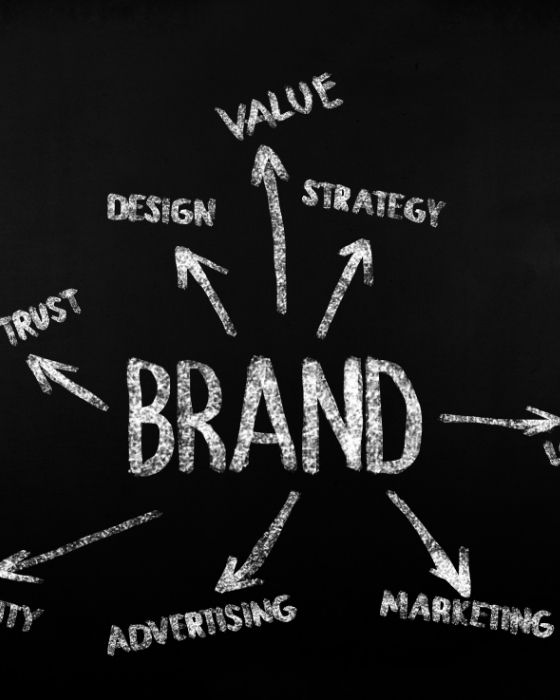Introduction to Funnel Building for Service Businesses
Funnel building for service businesses is a powerful strategy that enables organizations to enhance client acquisition and improve conversion rates. As potential clients navigate their journey from awareness to action, understanding this funnel becomes essential for service-oriented sectors. Unlike product-based businesses, service companies often face a more complex decision-making process that hinges upon trust and personal interaction.
The sales funnel encapsulates the various stages clients pass through—awareness, interest, decision, and action—each requiring distinct marketing tactics to effectively engage prospects. Early stages may involve tactics such as SEO-optimized content and social media outreach to raise awareness, while later stages focus on persuasive email sequences and compelling calls to action that encourage decision-making.
Successful funnel building hinges on crucial components that attract and convert leads, including enticing lead magnets, engaging landing pages, and targeted follow-up sequences. By meticulously designing each element of the funnel, service businesses can create a seamless experience that not only nurtures relationships but also fosters trust and establishes authority in their field.
As we delve deeper into this article, we will explore how to effectively map the client journey, leverage essential tools, and create high-converting lead magnets—not just to enhance the funnel, but to ultimately secure lasting client relationships. Understanding and implementing strategic funnel building is a vital step towards achieving sustained growth in competitive service markets.
Understanding Funnel Building for Service Businesses
Funnel building is a crucial strategy for service businesses aiming to streamline client acquisition and boost conversions. A sales funnel represents the journey potential clients take from the moment they become aware of a service to the point of engaging with it. For service-based businesses, this journey is uniquely tailored, as the decision-making process often involves a higher level of trust and interaction compared to product-centric sales.
To effectively implement a funnel, businesses must first map the client journey, breaking it down into four key stages: awareness, interest, decision, and action. Each stage presents unique opportunities to engage and inform potential clients, aligning marketing efforts with their specific needs. For example, during the awareness stage, a business might use informative blog posts or social media campaigns to educate potential clients about their services.
Moreover, several essential components comprise an effective funnel. Service businesses should focus on creating enticing lead magnets, well-designed landing pages, targeted email sequences, and clear call-to-action strategies. These elements work together to nurture leads through each stage of the funnel, ultimately guiding them toward making a decision while simultaneously establishing credibility and rapport.
Mapping the Client Journey From Awareness to Conversion
Understanding the client journey is vital for service businesses looking to optimize their funnel for maximum client acquisition. This journey unfolds in four critical stages: awareness, interest, decision, and action. Each stage requires tailored marketing strategies to effectively engage and convert potential clients.
In the awareness stage, potential clients first learn about a service. Businesses can leverage SEO-optimized content, educational webinars, or informative videos to attract attention. The goal is to establish visibility and drive traffic to the website.
During the interest stage, prospects seek more information and compare different services. Here, effective landing pages with compelling value propositions can capture leads through free resources, such as eBooks or consultations. These lead magnets are designed to address potential clients’ pain points, drawing them closer to a decision.
As potential clients progress to the decision stage, persuasive email sequences and testimonials can reinforce trust, providing social proof of the service’s effectiveness. Lastly, in the action stage, strong calls-to-action are crucial, encouraging prospects to take the final step, whether it’s booking a service or making a purchase.
By meticulously mapping this journey and aligning marketing efforts with the client’s needs at each stage, service businesses can create a seamless, engaging experience that fosters conversion and builds lasting client relationships. [HubSpot]
Key Funnel Components Every Service Business Needs
To successfully implement a sales funnel, service businesses must focus on several key components that enhance engagement and drive conversions. These elements work synergistically to create a seamless client experience from the initial point of contact to the final action.
First and foremost, lead magnets are critical in attracting potential clients. These valuable resources can include free consultations, informative guides, or exclusive webinars that address the specific pain points of the target audience. By offering these incentives, businesses not only generate leads but also position themselves as experts in their field.
Equally important are landing pages, which serve as the focal point for converting attracted leads. An effective landing page should feature clear messaging that resonates with the audience, alongside visually appealing designs that prompt visitors to take action, whether it be signing up for a newsletter or booking a service.
Email sequences also play a vital role in nurturing leads throughout the funnel. Strategically crafted emails provide valuable content, build trust, and gradually guide potential clients toward making informed decisions. Finally, the integration of persuasive calls-to-action ensures that every interaction has a clear goal, driving prospects to take the next step in their journey.
By incorporating these essential components into their funnels, service businesses can effectively transform leads into satisfied clients, ultimately leading to higher conversion rates and sustained growth in client acquisition. [Neil Patel]
Tools and Platforms to Streamline Funnel Building for Service Businesses
Service businesses looking to enhance their funnel building process can benefit significantly from various tools and platforms that simplify creation, testing, and optimization. Investing in the right software can save time and improve overall funnel performance, ultimately leading to increased client acquisition.
One popular tool for funnel creation is ClickFunnels, which allows users to design customized sales funnels with drag-and-drop functionality. Its user-friendly interface enables service providers to create landing pages, manage email marketing campaigns, and integrate payment systems without extensive technical knowledge.
Another effective platform is Leadpages, which specializes in high-converting landing page templates tailored for various service sectors. This tool helps businesses quickly generate leads while offering A/B testing features to ensure optimal performance.
For email marketing and automation, Mailchimp serves as an ideal choice. Its robust analytics allow service businesses to track engagement and fine-tune their messaging, ensuring that each email sequence resonates with the audience.
In addition, HubSpot offers a comprehensive CRM solution that integrates seamlessly with marketing tools, providing valuable insights into customer interactions and funnel performance. By leveraging these technologies, service businesses can streamline their processes, enhance client engagement, and ultimately increase their client base efficiently. [HubSpot]
Creating High-Converting Lead Magnets for Service-Based Offers
Crafting compelling lead magnets is a pivotal strategy for service-based businesses seeking to attract qualified prospects and enhance conversion rates. Lead magnets serve as the initial touchpoint in a sales funnel, enticing potential clients with valuable content tailored to their specific pain points.
To create high-converting lead magnets, businesses should first identify their target audience’s challenges. For instance, a marketing agency might offer a free guide on “10 Proven Strategies for Improving Social Media Engagement.” By addressing a pertinent issue, the lead magnet becomes irresistible to potential clients eager for solutions.
Another effective strategy is to leverage interactive content, such as quizzes or assessments. These not only engage prospects but also provide personalized feedback, making the lead magnet feel customized. For example, a coaching service might offer a quiz titled “Discover Your Productivity Style” that leads to tailored advice, positioning the service as an authority in the space.
Additionally, it’s essential to ensure that the lead magnet is visually appealing and easy to consume. High-quality graphics and a clean layout can enhance perceived value, increasing the likelihood that prospects will exchange their contact information. Once created, promoting these lead magnets through social media, email campaigns, and targeted landing pages can optimize reach, effectively nurturing leads into the funnel. [Content Marketing Institute]
Optimizing and Measuring Funnel Performance to Get More Clients
Optimizing and measuring funnel performance is essential for service businesses to maximize client acquisition and ensure efficient use of marketing resources. By closely monitoring key funnel metrics, such as conversion rates, drop-off points, and engagement levels, businesses can identify areas requiring improvement to enhance overall funnel efficacy.
One of the primary metrics to track is the conversion rate, which measures the percentage of leads that take the desired action at each funnel stage. A low conversion rate indicates potential issues in messaging or user experience, prompting a need for adjustments. Implementing A/B testing is an effective strategy to compare variations of landing pages, email content, or calls-to-action, revealing which elements resonate better with the audience.
Another vital aspect of optimization is understanding funnel drop-off points. Analyzing where potential clients disengage allows businesses to refine their content and approach at those critical junctures. Tools such as Google Analytics or specialized conversion tracking software can provide valuable insights into user behavior throughout the funnel.
Further, utilizing feedback loops through client surveys and testimonials can illuminate areas needing attention and enhance service offerings. By continually optimizing the funnel based on these insights, service businesses can drive faster client growth, ensuring that their marketing strategies remain responsive and effective in meeting client needs. [Optimizely]
Conclusion: The Importance of Funnel Building for Service Businesses
In summary, funnel building for service businesses emerges as a critical strategy for optimizing client acquisition and conversion rates. By thoroughly understanding the client journey and implementing tailored marketing tactics at each stage—from awareness to action—service providers can effectively guide prospects toward engagement. The incorporation of essential components, such as compelling lead magnets and well-designed landing pages, enhances lead generation and nurtures potential clients through their decision-making process.
Additionally, utilizing the right tools and platforms streamlines the funnel creation process, enabling businesses to focus on refining their marketing strategies. This reliance on data-driven insights through performance metrics and feedback mechanisms facilitates ongoing optimization, ensuring that service businesses remain competitive in a dynamic market environment. Ultimately, the value derived from adopting best practices in funnel building can lead to sustainable growth and long-term client relationships. Service businesses are encouraged to embrace these strategies and continuously explore innovative approaches to enhance their marketing efforts.









